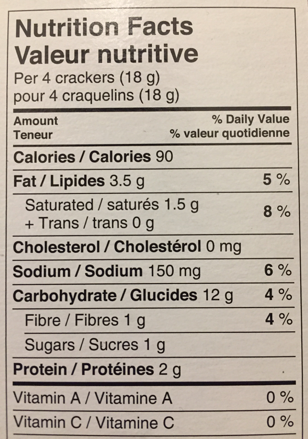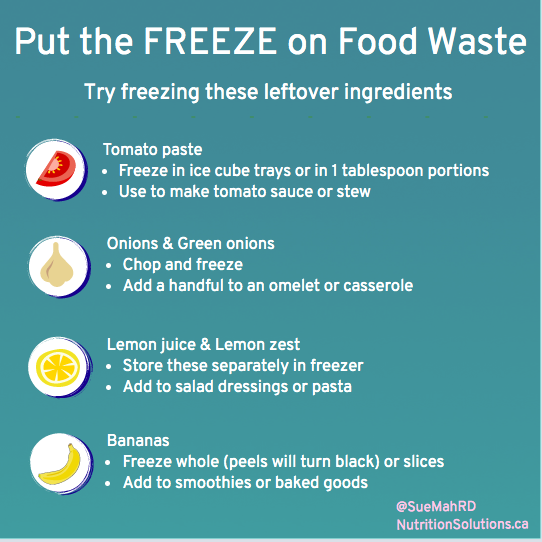
**To celebrate National Nutrition Month, we have a 5-week series of guest posts written by Deepanshi Salwan, MPH candidate and a dietetic graduate student at the University of Toronto.**
It’s March and we are celebrating Nutrition Month! Every year dietitians, dietetic interns, and nutrition students across Canada celebrate Nutrition month to raise awareness about nutrition and the positive impact it has on our health and wellbeing.
This year Nutrition Month centres on the idea that healthy eating looks different for everyone. It is not a one-size-fits-all approach, and your healthy eating will look different from someone else’s healthy eating based on culture, food traditions, personal circumstances, and nutritional needs.
To honour Nutrition Month, I have teamed up with Registered Dietitians and Dietetic Graduate Students from diverse cultural backgrounds to put together a Nutrition Month 2021 blog series! Each week for the month of March, different dietitians and dietetic students will share their food traditions, cultural recipes, and the importance of culture in healthy eating.

A South Asian family enjoying a meal together
Cultural foods and traditions foster connections and encourage a sense of belonging
In week 1, we talked about incorporating traditional dishes and ancestral ways of cooking and eating in a healthy eating regime. You can find the post here.
This week, we touch on one of the most important aspects of health that is having strong social connections. When most people think about living a healthy life, food and fitness are the first things that come to mind. Certainly, food and fitness are important, but they are not the only pieces of the puzzle. The social connections you form are also vital to your well-being.
I introduce my colleagues Rosie Schwartz and Bhavin Mistry, who will share their cultural food traditions and highlight the importance of connecting with loved ones through cultural foods.

Registered Dietitian Rosie Schwartz
Rosie Schwartz, RD, FDC
rosieschwartz.com
Instagram: @rosieschwartz
Facebook: EnlightenedEater
1. What’s your cultural background?
I am Jewish
2. What is the meaning of food in your culture? / How is food used in celebrations or traditions?
Food is central to family traditions in the Jewish culture. Our holidays and celebrations often center around food – sweet honey cake at Rosh Hashanah, noodle and cheese dishes for Shavuot, hamantaschen for Purim, and many more.
For instance, for Rosh Hashanah, Jewish New Year, sweet foods are eaten to symbolize our hope for a “sweet new year”. We enjoy a new fruit that has recently come into season. We have two apple trees in our backyard, and I with my two granddaughters pick the very first apples of the season on Rosh Hashanah. We begin our celebrations with cut-up apples dipped in honey.

Rosie’s Passover Citrus Quinoa Salad
3. What is your favourite cultural ingredient or food or recipe?
As we approach spring, Jewish around the world will be celebrating Passover to commemorate the freedom of the Jews from slavery in ancient Egypt. Matzo, unleavened bread is an integral part of Passover that reminds us of our ancestors eating unleavened bread in the haste of fleeing Egypt. For Passover traditions, we abstain from leavened grains, rice, and pulses (Sephardi Jews can include beans, corn, and rice).
My favourite ingredient for Passover is quinoa. It is not one of the prohibited grains and is a great addition to the Passover celebrations with health benefits! Citrus Quinoa salad has become a Passover staple in our house. You can find Rosie’s recipe here.
4. What would you like to say to Canadians during National Nutrition Month?
Our traditional foods can tie us together. Amid pandemic, so many of us are separated from our families. Make a dish, drop them off to your loved ones and eat together via Zoom or Facetime. If you don’t live in the same geographical area, figure out the menu together and make the same meal, and enjoy the meal virtually. Share a meal with your loved ones, whether it is special or not. We need more of this now than ever before!

Dietetic graduate student Bhavin Mistry
Bhavin Mistry, Dietetic Graduate Student
Instagram: @breadbhavandbeyond
1. What’s your cultural background?
I am South Asian—but more specifically Indian (Indo-Canadian) and our mother language at home is Gujarati.
2. What is the meaning of food in your culture? / How is food used in celebrations or traditions?
Food holds the central foundation of Indian culture. It connects family, caste, religion, and language. Food is an integral part of Indian culture because it has been influenced by various civilizations and reflects the perfect blend of diversity and uniqueness. For as long as I can remember, food has always been a form of a gift. It is often exchanged between family members and shared amongst others.
Celebrations are always massive in Indian culture. Food is typically the “centre of attention” at celebrations, with immense spreads of various dishes, family recipes, and traditional eats. For many celebrations, the preparation of food is usually a full group effort. All members of the family will spend hours upon hours preparing traditional dishes for the big day. It’s a form of social bonding, connection, and socialization. Food is the glue that holds and brings individuals together, the highlight of the event, and the main reason why you will never leave an Indian event hungry!
 3. What is your favourite cultural ingredient or food or recipe?
3. What is your favourite cultural ingredient or food or recipe?
My favourite Indian food has to be biryani. Biryani is a super versatile rice dish made up of a variety of ingredients. It could be vegetarian and only consist of vegetables or can incorporate meat as well. I love it because it is so unique, flavourful, and can consist of several different combinations of ingredients. It is usually garnished with fried onions, nuts, and coriander. You can find a Chicken Biryani recipe here.
4. What would you like to say to Canadians during National Nutrition Month?
Food is more than nourishment. It provides our bodies with fuel and energy to sustain life. But it also contributes and links to our social, cultural, and societal heritage, values and norms. Food can be nostalgic and can provide important connections to our families and country. It can act as a bridge for immigrants/newcomers when they arrive in a new country. It brings people together and is important in building relationships with others. The next time you take a bite to eat, think about what that specifically means to you, the emotions that surface from it and how it relates to your way of living.
Bottom Line
Sharing a meal with your family fills a primary need for community and connection on so many levels! Promoting social connections through our cultural foods is a part of healthy eating. So, find your healthy by putting together and enjoying a family favorite cultural recipe.
Come back next week to learn more about traditional cuisines and healthy eating in our Nutrition Month 2021 blog series.
Click here to learn more about the Nutrition Month 2021 campaign.
I thank Rosie and Bhavin for their time and contribution to this post.
Let’s Talk
What is your family food tradition? Let me know in the comments.

Written by:
Deepanshi Salwan, MPH candidate – Deepanshi is a dietetic graduate student at the University of Toronto. Her nutrition philosophy embraces moderation without deprivation. She believes that healthy eating does not have to be complicated and hopes to inspire her audience to live more happy and healthy lives! You can find her on Instagram @deeconstructing_nutrition.






 3. What is your favourite cultural ingredient or food or recipe?
3. What is your favourite cultural ingredient or food or recipe? 













